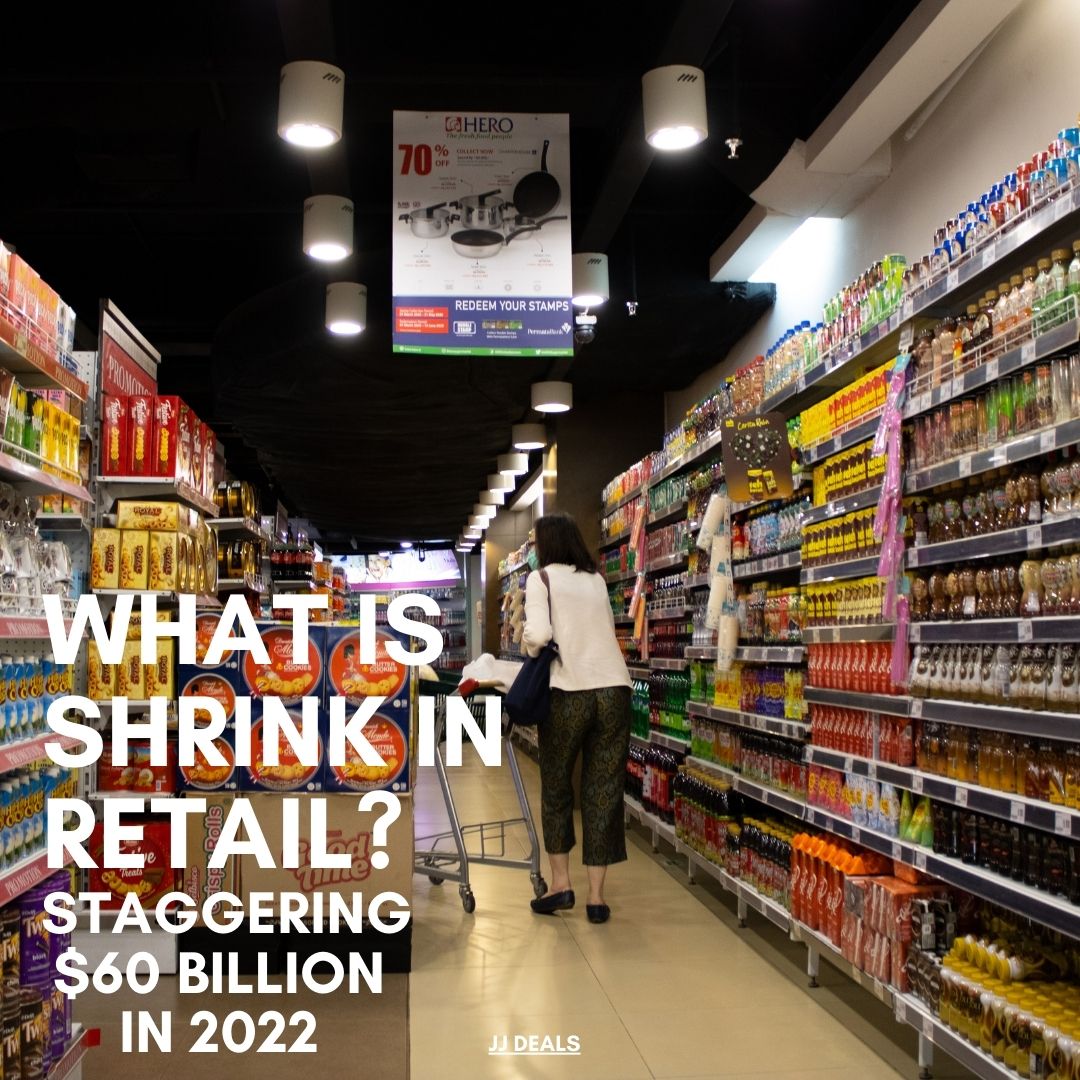
What is Shrink in Retail? Staggering $60 billion in 2022
What is Shrink in Retail? Staggering $60 billion in 2022.
Shrink is a term used to describe the loss of inventory due to shoplifting, employee theft, vendor fraud, administrative errors, and other factors. Theft is a subset of shrink that refers specifically to the intentional removal of merchandise from a store without paying for it.

The cost of shrink and theft to retailers is significant. In 2022, the National Retail Federation (NRF) estimated that shrink and theft cost retailers $60 billion in the United States alone. This represents about 1.5% of total retail sales.
The cost of shrink and theft can vary depending on the type of retailer and the location of the store. For example, convenience stores and grocery stores tend to have higher shrink rates than department stores and specialty retailers. Stores in urban areas also tend to have higher shrink rates than stores in rural areas.
What is Shrink in Retail. There are a number of factors that contribute to shrink and theft in the retail industry. These include:
- Easy access to merchandise: Stores with open floor plans and few security measures are more vulnerable to shoplifting.
- High-value merchandise: Stores that sell high-value items, such as electronics and jewelry, are more likely to be targeted by thieves.
- Low-paid employees: Employees who are not paid well may be more likely to steal from their employers.
- Lack of training: Employees who are not properly trained in loss prevention techniques may be more likely to overlook suspicious activity.
- Technology vulnerabilities: Stores that use outdated or poorly configured security systems are more vulnerable to theft.
What is Shrink in Retail: Retailers can take a number of steps to reduce shrink and theft, such as:
- Installing security measures: This includes things like security cameras, alarms, and EAS tags.
- Providing training for employees: Employees should be trained to identify and report suspicious activity.
- Monitoring inventory levels: Retailers should track their inventory levels closely to identify any unusual fluctuations.
- Working with law enforcement: Retailers should work with law enforcement to investigate and prosecute theft cases.
Shrink and theft are a major challenge for the retail industry. By taking steps to reduce shrink and theft, retailers can protect their bottom line and improve their overall security.
What is Shrink in Retail: Here are some additional things to know about shrink and theft in the retail industry:
- The cost of shrink and theft is increasing. The NRF estimates that the cost of shrink and theft will reach $67 billion in 2023.
- Organized retail crime (ORC) is a growing problem. ORC is the theft of merchandise by organized groups of criminals. ORC is responsible for a significant portion of shrink and theft in the retail industry.
- Technology is playing a role in reducing shrink and theft. Retailers are increasingly using technology, such as security cameras and EAS tags, to deter and prevent theft.
How to reduce shrink in your retail business:
- Install security measures: This includes things like security cameras, alarms, and EAS tags.
- Provide training for employees: Employees should be trained to identify and report suspicious activity.
- Monitor inventory levels: Retailers should track their inventory levels closely to identify any unusual fluctuations.
- Work with law enforcement: Retailers should work with law enforcement to investigate and prosecute theft cases.
- Use technology: There are a number of technology solutions available that can help retailers reduce shrink. These solutions include video analytics, RFID tagging, and predictive analytics.
- Implement loss prevention procedures: Retailers should have a comprehensive loss prevention program in place that includes policies and procedures for preventing and detecting theft.
- Create a culture of honesty and integrity: Retailers should create a culture in which employees feel comfortable reporting suspicious activity.
By taking these steps, retailers can reduce shrink and theft and protect their bottom line.
The Future of Marketing: What You Need to Know





